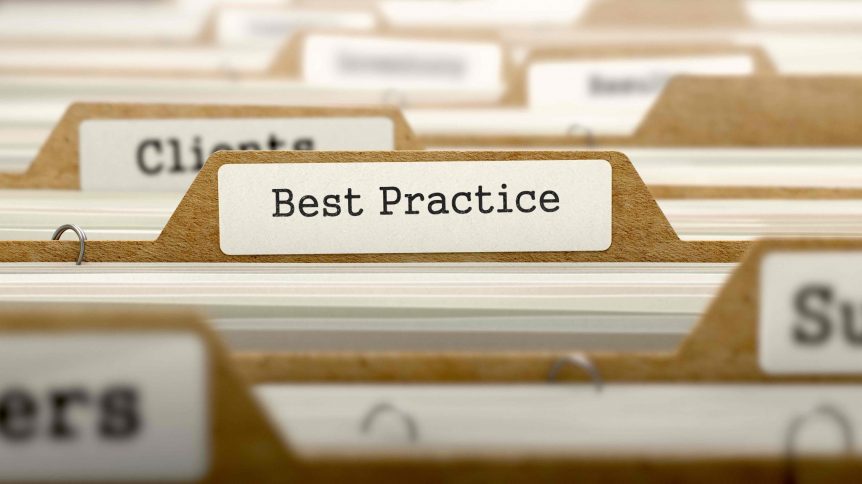Instructional Design Best Practices When Developing E-Learning Courses
Instructional design involves taking a structured approach to creating an e-learning course. The objective is to facilitate and help the learning process. To achieve this, it is important to follow instructional design best practices when developing e-learning courses.
We defined instructional design in detail and discussed its importance in a previous blog, so we’ll not go into it further here.
Instead, let’s get right into the best practices for instructional design.
Research Before You Start
I have lost count of the number of times I have seen or heard about e-learning course creators who get stuck into a new project straight away with technical and content development. For us, there are several steps that must be taken before this stage if you want to follow instructional design best practices – and if you want to get the best results!
Primarily, you need to get a full understanding of the objectives of the business. You also need to get a full understanding of the learners who will complete the course. This includes their level of skill, their anticipated enthusiasm levels for going through the course, and what will make the course interesting and relevant to them.
Personalise the Course
Good instructional design involves personalising the e-learning course as much as possible. In fact, this is one of the best ways to facilitate the learning process. After all, if a learner can relate what they are being taught to what happens in their day-to-day work environment, they are much more likely to take it in.
They are also more likely to be engaged and interested in the course.
Make Active Learning Central to the Experience
Good e-learning courses are not passive where the learner simply reads information, looks at images, and watches videos. Instead, it is much better when the learner is actively involved in the course.
Primarily, this means adding problem-solving activities, scenarios, and quizzes. Giving the learner a degree of autonomy over their progress through the course can also promote active learning.
Chunk Content
The best way to present content in an e-learning course is in easy-to-digest chunks. This means minimising distractions and clutter, avoiding going off on tangents, and focusing on one thing at a time.
In practical terms, it means short paragraphs, lists instead of paragraphs, short modules, and brief videos/audio. When you put all this together, it should lead the learner on a journey. However, from the learner’s perspective, they should never be daunted by what they need to do next.
Here is an example of one daunting and one comfortable approach to the same complicated topic:
- Daunting – reading 3,000 words of text or watching a 45-minute video
- Comfortable – going through one of five 10-minute modules
The difference is the latter chunks the content into bite-size amounts.
Write Good Questions
Presenting really good questions to learners is another important aspect of instructional design.
After all, the objective of most instructional design-led e-learning development projects is not to get the learner through the course as quickly as possible. Instead, it is to get the learner through the course with as much understanding and memory retention as possible.
So, it is important to avoid guessable or yes/no questions. Instead, the questions in your e-learning course should have the following characteristics:
- Relevant – the learner should be able to relate to them
- Open-ended – the learner should have to not only think about the answer, but to also think about how they will present the answer
- Encourage problem-solving – the best questions require the learner to go through stages to solve a problem
Make the Instructor Present and Available
One of the main challenges you face when designing e-learning courses is to make them personable. In other words, to present the course with a human face rather than it being a faceless piece of technology.
You can do this by making the instructor of the course present and available. There are several ways to achieve this:
- Use a main instructor in videos
- Create virtual instructors in the form of avatars
- Give learners the ability to reach out to a real person when they need help
- In some cases, it is also helpful to include some instructor-led elements
Test and Evaluate
Testing and evaluating is another essential best practice in instructional design. Testing takes place before you distribute the course to learners while evaluation takes place after.
When testing a course, you should look at the following:
- Accuracy of the content, including factual accuracy as well as spelling and grammar
- All navigational elements to ensure they all work as expected – never assume, always check
- The usability of the course, ensuring it is easy to use and intuitive – the course should require minimal process, navigation, or usability instruction
- Loading time, particularly if learners can complete elements of the course on their phones
Evaluation involves checking all the above too. In addition, it also involves ensuring the content, the navigational structure, and the flow of information deliver on the main objective of instructional design, i.e. facilitating and helping the learning experience.
It’s All About Results
As you can see, the whole process of instructional design is about getting results. Taking a structured approach to e-learning course creation, focusing on learners, and following the best practices on this list, helps to achieve that.
